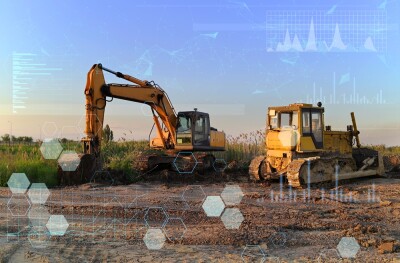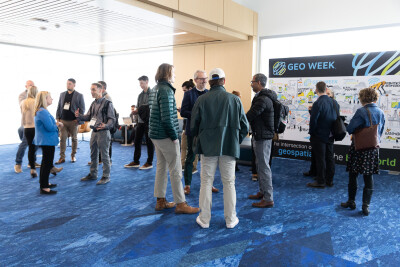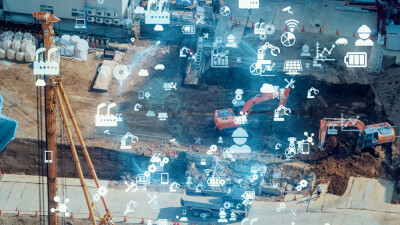Earlier in the summer, Engineering News-Record (ENR) held their annual FutureTech conference in San Diego, California. The conference highlights the latest innovation in the AEC space, billing itself as bringing “insights into the revolutions, evolutions and inventions changing construction technology today. This is a can’t-miss event for construction tech leaders to explore emerging technologies that will increase productivity, deliver efficiencies, improve safety and profits.”
Although Geo Week News did not attend this year’s event, ENR has replayed some of the sessions to be viewed as webinars. Recently, they replayed a session highlighting the ways that AI is already being used to transform the construction industry. The session, entitled Building Tomorrow: AI is Revolutionizing Construction Across the Globe, was sponsored by Procore and featured the company’s Chief Data Officer Joy Durling serving as a moderator. Durling was joined on stage by Amy Jones Snider, Director of Data and Analytics with Skanska, and Tessa Lau, CEO and Founder of Dusty Robotics.
The conversation was a wide-ranging one that focused primarily on artificial intelligence’s place in the construction industry today and looking forward, but that inevitably merged into talk about other technologies for which AI can serve as a backbone, like robotics and BIM. Durling set the stage early in the conversation for talking about Procore’s approach to the technology question when she said their goal is to “combine real applications of how we believe some of these new technologies [ML, GenAI, Robotics] are really revolutionary and driving the future of the construction industry.”
Ultimately, there were a few threads pulled upon in the conversation that sparked some interest about where we are today in the construction industry, and where we might be heading in the future.
Connecting the Office to the Field
In these relatively early stages of implementing new technologies into the construction industry, one of the main challenges has been providing new solutions for the workers in the field. Work in the office, be it design, project planning, project management, procurements, or other work can be more easily augmented by new tools since that work is generally done on a computer sitting at a desk. This work is, of course, crucial to the success of a given project and to the industry more broadly, but ultimately it’s the work in the field that defines the industry. Construction is there to build things, and that building is done in the field.

The way things are currently done lead to some disconnects, but many people – including those on the stage for this discussion – are working hard to find ways to make that connection between the office and the field more streamlined and, ideally, automated. During the conversation, Durling cited a research project funded by Procore which found that 18 percent of time in the field is spent searching for the right information – to which Lau responded that those people aren’t Dusty Robotics customers.
The latter comment was largely tongue-in-cheek, but there’s real truth to the idea that the companies who are adopting cutting edge tools are, by and large, more efficient. At another point in the conversation, Snider mentioned the oft-cited stat that 96 percent of construction data goes unused. There’s so much data for this industry, but ultimately the people in the field are not getting it in structured, usable forms. By and large, forming that concrete connection is still very much a work in progress, though the trio does discuss some ways they are seeing AI and robotics start to create that bridge.
BIM drives innovation
When we think about the new technologies that are taking over the AEC industry, BIM is often among the most prominent mentioned. This is for good reason, as it’s become widely adopted and required in many projects, even if it’s not completely ubiquitous in the industry. This conversation talked about how it should be – and for forward-thinking firms, is – at the center of the AI and robotics conversation. Snider talks about how BIM can be used for coordinating schedules for work in the field, and sent to robotic layout tools for that work.

That, of course, is among the specialties for Dusty Robotics, which means that Lau had insights into how this relationship can really be harnessed by firms in the sector. Most notably, she detailed how BIM usage essentially forces more coordination and planning, sharing one use case in which a customer placed QR codes around a job site so workers in the field had readily available access to the latest planning changes for the project.
People at the center
As with any conversation about AI, eventually the discussion turned to the direct effects on the human workers. Understandably, there are workers in the construction industry who are concerned that a proliferation of artificial intelligence will ultimately take away jobs. Also like most of these conversations, the panelists emphasized their belief that these automated tools are built to enhance the workers, not replace them.
To be clear, I don’t believe people who say this are lying, nor do I believe they are wrong – today. The construction industry right now is dealing with extreme worker shortages as well as heavy demand as urbanization takes place around the world and aging infrastructure requires replacement. The only way to feasibly make that work is with automated tools. That said, I do think this refrain has been used so often that it’s at risk of just becoming a repeated line without real substance.
That’s not to suggest that’s the meaning in this particular panel, or that one segment of a 45-minute panel discussion is the place for a detailed plan to ensure people remain at the center of these conversations. However, everyone in the industry – from workers to technology providers to those covering it – need to ensure that this idea of using AI and other tools as enhancement rather than replacement remains a concrete, front-of-mind goal rather than an idea that loses all meaning. Right now, these tools are not strong enough to actually replace human workers in a meaningful way, but that may not be the case a decade or two from now.
You can sign up for access to a recording of this conversation here.






